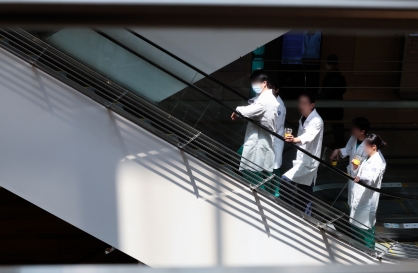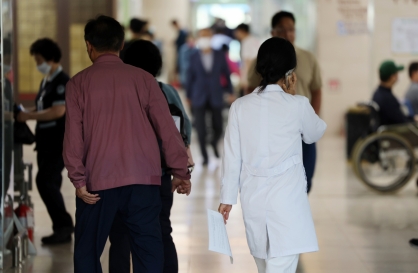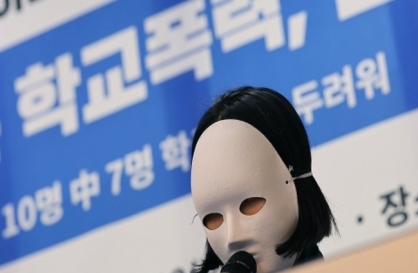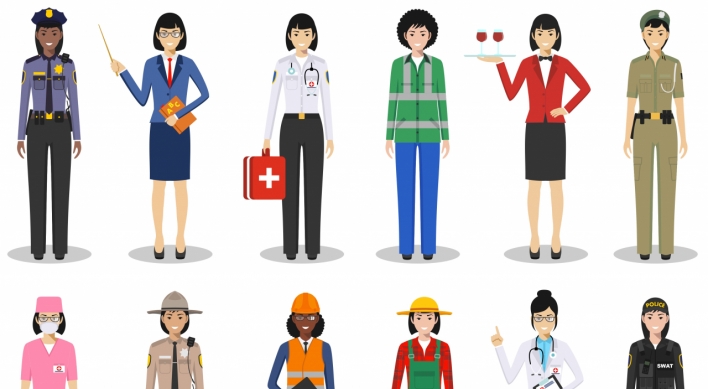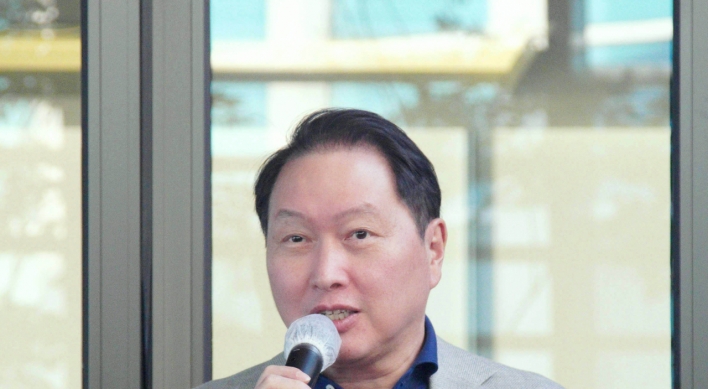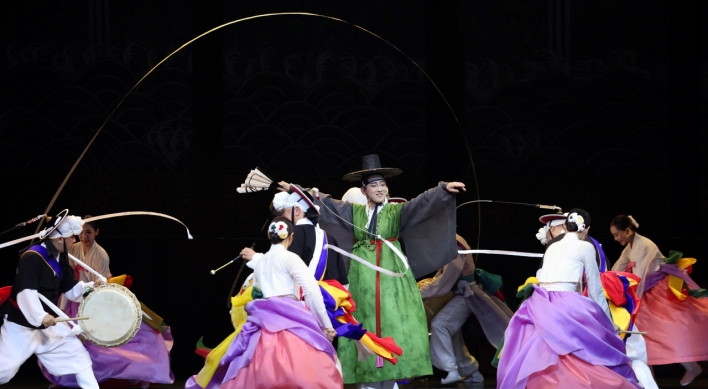Constitution emerges as key issue
Presidential candidates propose revision of basic law
By Korea HeraldPublished : Nov. 2, 2012 - 20:39

The issue has been picked up by politicians eager to show their reform credentials or in need of momentum to break through political conundrums. The current single-term, five-year presidency and the concentration of power in the Chief Executive has been an easy target of blame when they faced criticism for corruption, partisan bickering or government incompetence.
Barely 50 days before the presidential election, constitutional revision is bursting to the forefront with campaign offices responding to surging voter demands for political reform.
Some of the reform agenda being floated about in each candidate’s camp include changing the term limits of the president, establishing a vice presidency, and divvying up the administrative powers between the president and the prime minister.
The political calculus underlying the talks of constitutional reform concerns the likely coalition ticket pursued by liberal presidential candidates Rep. Moon Jae-in of the Democratic United Party and independent Ahn Cheol-soo.
Both agree on the need to balance the dominant power of the president often described as an imperial presidency. An agreement on the shift of the government system could be a thread for their proposed candidate unification.
Saenuri Party nominee Park Geun-hye has yet to speak up on the issue but her strategists are flirting with the theme to neutralize the impact of the single opposition candidacy.
“The issue of the merger between the opposing candidates is swallowing up all political discussions like a black hole,” a Saenuri Party official told reporters on Wednesday.
Emphasizing the prospect of electing the nation’s first female president, along with the promise of constitutional reform can be combined to counter the likely merger, the official added.
One constitutional revision being discussed in political camps across the ideological isle concerns allowing the president two consecutive four-year terms. South Korea’s constitution currently limits the president to a single five-year term, which hinders a long-term, consistent conduct of policies and has often caused a premature degeneration into lame-duck status.
Park Geun-hye has long proposed shifting to two successive, four-year terms and holding presidential and parliamentary elections simultaneously.
In a paper submitted to the National Election Commission in September, Park wrote that “consecutive four-year terms would be better but the time period for reform should be carefully thought out.”
Ahn Cheol-soo has also been reported to be considering constitutional revision to divide the administrative powers between the president and the prime minister, so the president would oversee foreign, defense, and national security policies while the prime minister would take charge of domestic affairs.
At a discussion forum with professors held on Tuesday, Moon Jae-in stated that he would be willing to consider establishing the post of vice presidency, as well as strengthening the power of the National Assembly, and also allowing regional governments to exercise more autonomy and administrative power.
Calls for the revision have been rising in broader political circles. In mid-October, 17 senior politicians across the ideological aisle issued a joint statement urging the presidential candidates to press for constitutional reforms, including changing the presidential mandate and dividing up the administrative powers vested in the executive office.
Among those who signed the joint statement were former prime ministers Goh Kun and Lee Han-dong and former speakers of the National Assembly, Kim Hyung-oh and Park Gwan-yong.
The Constitution has been amended nine times since the Korean government was established in 1948. The current system, proclaimed in February 1988, resulted from the June 1987 civil uprising against general-turned president, Chun Doo-hwan.
The key features of the 1988 revision were a change from the election of the president by an electoral college to an election by popular vote and the replacement of the president’s seven-year single term in office with a five-year single term.
“The single five-year term of the presidency,” said Kang Won-tek, a professor of politics at Seoul National University, “was installed to prevent the continuation of military regimes.”
But the single five-year term limit has emerged as a cause of continuing political problems since the end of the military rule. No civilian government has ended its term with an approval rating higher than 30 percent, and major corruption scandals have affected every administration.
“In explaining why South Korea keeps producing presidents who fail, the structural problems of the five-year single term presidency and problems with the character and leadership of the presidents are often cited,” wrote Kim Hyung-jun, a professor at Myongji University.
The constriction on the term limit arose from decades of autocratic rule. The Yushin Constitution promulgated in 1972, which consilidated power for then President Park Chung-hee, debilitated the National Assembly and opposition parties. The Constitution gave law enforcement organs, including the Korean Central Intelligence Agency, extensive powers to brutally crack down on its own citizens who opposed the Yushin dictatorship ― all under the name of national security and fighting North Korean communists.
Dissidents and critics of the regime ― college students, journalists, civil activists ― were interrogated and tortured with electric shocks and water-boarding without due process. After Park was assassinated by the head of KCIA in 1979, following protests against Park’s regime in Busan, a brief period of hope for democracy ensued that came to be known as the Seoul Spring.
But Chun Doo-hwan, a military general, usurped power by arresting his superiors and ordering his troops to seize Seoul. When Chun positioned himself to succeed Park’s autocratic rule ― by getting himself elected to the presidency in a gymnasium ― protests erupted nationwide and martial law was declared. In May 1980, when people in the southwestern city of Gwangju seized arms and refused to disperse despite warnings, Chun ordered paratroopers to subdue the protests.
The protestors waved the South Korean flag and marched on. The paratroopers played South Korea’s national anthem over the speakers and began shooting at the protestors, killing hundreds and injuring thousands ― women, children, and senior citizens. Chun’s military junta portrayed the rebellion as having been orchestrated by the North Korean government.
Chun ruled the nation over the next seven years with an iron fist. But with the rising income level and fortifying middle-class, protests for democracy broke out nationwide once again, and culminated in the 1987 June Democracy Movement, which ushered in the transition from military dictatorship to civilian rule through constitutional revisions.
For the first time in several decades, people were allowed to cast a vote for a leader of their own choosing. After years of dictatorial rule, the term for the presidency was limited to a single five-year term.
By Samuel Songhoon Lee (songhoon@heraldcorp.com)
-
Articles by Korea Herald




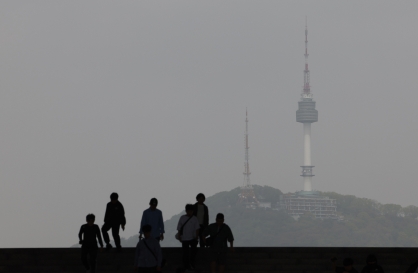
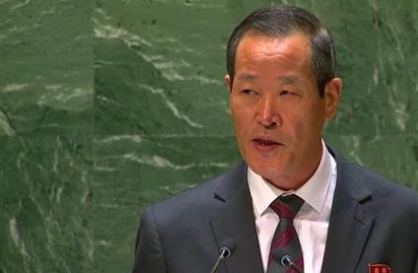
![[AtoZ Korean Mind] Does your job define who you are? Should it?](http://res.heraldm.com/phpwas/restmb_idxmake.php?idx=644&simg=/content/image/2024/05/06/20240506050099_0.jpg&u=)
